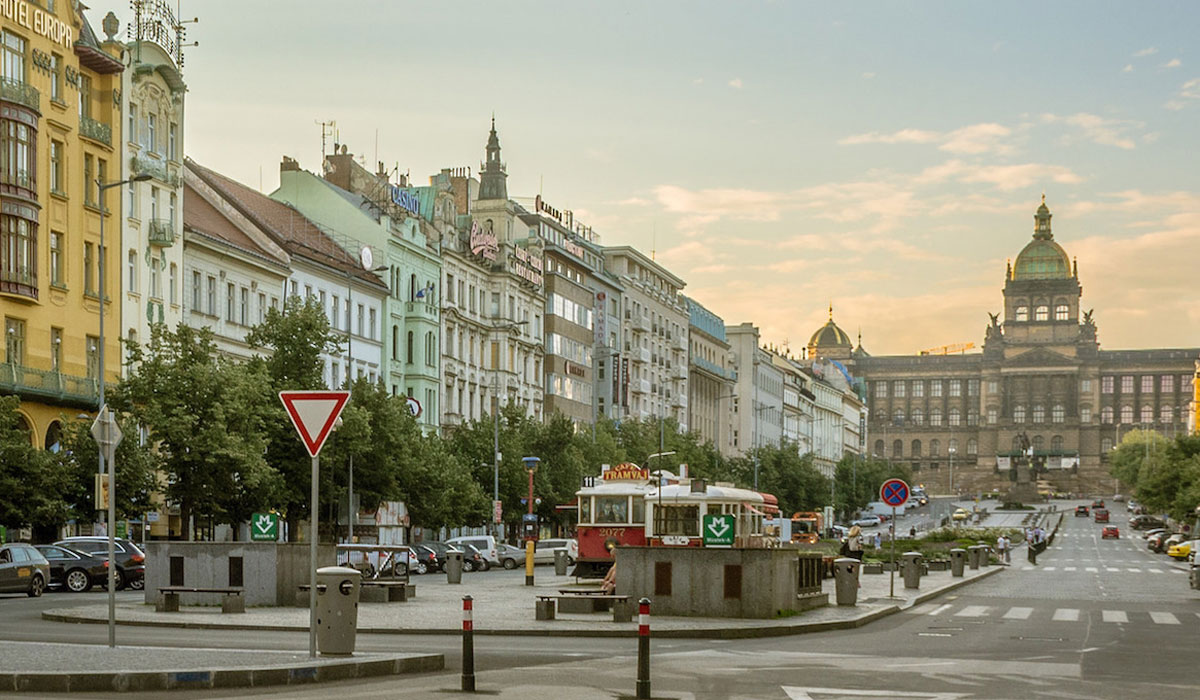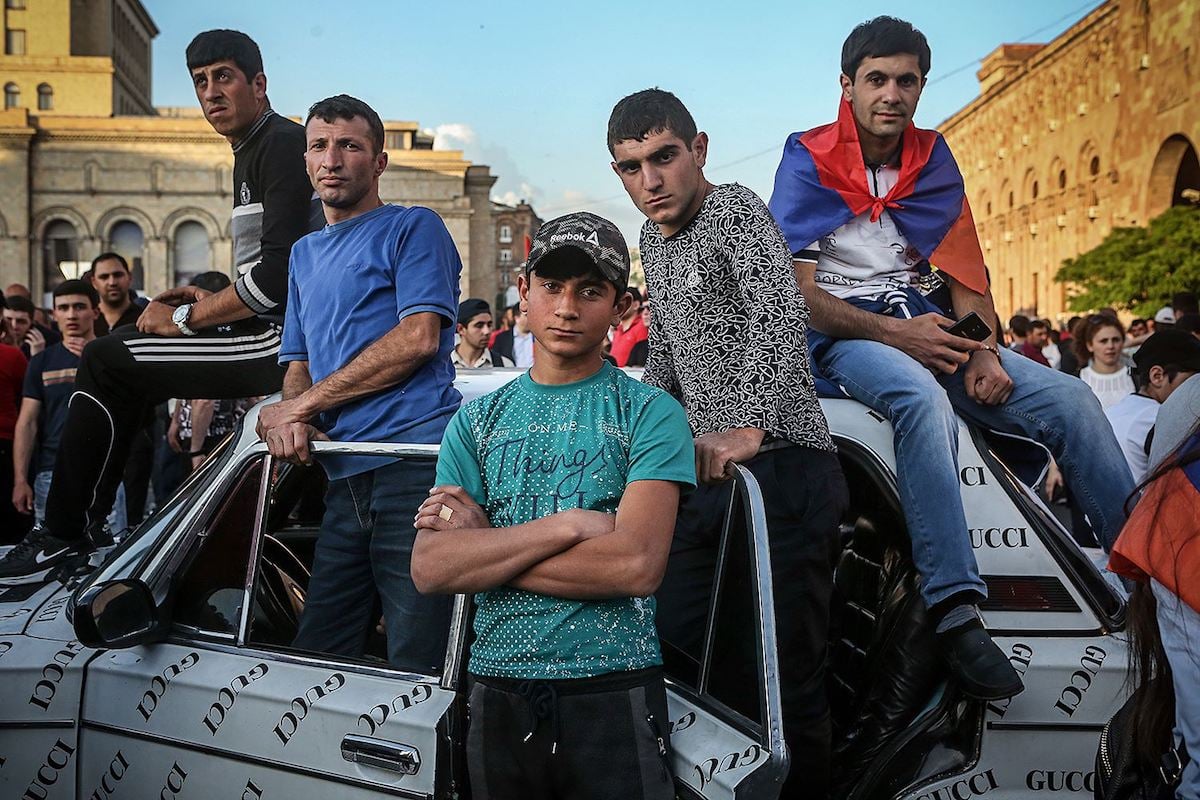The Velvet Revolution in photos: relive the fall of communism in Czechoslovakia in 12 iconic images
Marking three decades since the end of communist rule, London’s Czech Centre is hosting the work of 10 photographers who have come to define the visual history of Czechoslovakia’s 1989 Velvet Revolution. The 25 monochrome prints on display form a timeline, from the sudden uprising on 17 November, to the arrival of a new, pluralist political system on 10 December. These striking images of political turmoil are the seed from which an iconography has grown. Placards and flags are timeless symbols, but documentary photographs ask others to participate in the historical moment it’s born from.
One of the images which has become synonymous with the Velvet Revolution shows Czechs and Slovaks jingling their keys — representing the invisible door through which communism was soon to depart. The Czech Centre exhibition features a photograph of activist and Velvet Revolution leader, Václav Havel, rattling his own a pair of keys just weeks before becoming the last President of Czechoslovakia and then of the Czech Republic.
Václav Havel in Prague, November, 1989. Image: Pavel Štecha
Czechoslovakia’s Velvet Revolution was unexpected, growing from a peaceful demonstration commemorating International Students’ Day. The authorities responded to the student protest, which took place on Prague’s Národní Street on 17 November 1989, with brutal violence. After 41 years of communist rule, Czechoslovakia was, under a thin veil, at its breaking point. Weeks of strikes and protests were attended by many hundreds of thousands in what came to be a bloodless unrest. Photographer and curator Dana Kyndrová described how for those who took part, the revolution “represents ideas such as liberty, new energy, enthusiasm, and high expectations for the future ahead”. Despite political reshuffles and other desperate attempts to quell the storm, it was but weeks until the first non-communist government was sworn in. During that time, Czechoslovakia saw a domino effect, touching everything from freedom of the press to a newly-found trust in a military that promised to protect the citizen over the party. It all culminated in the amendment of one line in Czechoslovakia’s constitution: one that described the “leading role” of the Communist Party. Its deletion marked the official end of Czechoslovakia’s communist dictatorship on 29 November 1989.
Kyndrová, who is best-known for documenting the many facets of womanhood under communist rule, was chosen to put together this exhibition due to her own experience photographing the Velvet Revolution. In many cases, she knew exactly who to turn to in order to fill any gaps in the historical narrative — and, because of her unique position within the Czech photographic community, Kyndrová found little resistance: “I have been curating photographs as well as exhibiting my own work for more than 15 years now, so my knowledge of what has been happening in that field is quite profound,” she says.
Compared to the London show, which has been prepared for an international audience, the simultaneous exhibition at Prague’s Belveder Gallery features 200 photographs. “There you can see photos taken by famous actors and other well-known Czech individuals, [but it] wouldn’t be suitable [for a London event],” Kyndrová explains. Curating such a concise yet intimately gripping series regarding such significant events is no mean feat, but Kyndrová still managed to rouse a chorus of jingling keys on opening night.
Národní St., Prague, 17 November, 1989. Image: Radovan Boček
Národní St., Prague, 17 November, 1989. Image: Jan Šibík
Workers from the ČKD engineering company march on Wenceslaus Square. Prague, 22 November, 1989. Image: Karel Cudlín
Prague, November, 1989. Image: Přemysl Hněvkovský
Hope for change generated excitement among all generations. Prague, November, 1989. Image: Jaroslav Kučera
At Letná in Prague, 750,000 people marched for the establishment of democracy in the country. Prague, November 25, 1989. Image
From the outset, students were the driving force behind the Velvet Revolution, immediately calling a strike at all colleges and demanding an investigation into the brutal police attack on student demonstrators at Národní St. Image: Dana Kyndrová
A human chain from Letná to Prague Castle. Prague, November 26, 1989. Image: Přemysl Hněvkovský
At a meeting of the Federal Assembly, the government proposed Václav Havel as a candidate for president. Citizens came to Prague from numerous cities to support the motion. December 19, 1989. Image: Karel Cudlín
Meeting in the Vladislav Hall at Prague Castle, members of both houses of the Federal Assembly unanimously elected Václav Havel president. Prague, December 29, 1989. Image: Pavel Štecha
Anti-communist meeting Prague, May, 1990. Image: Dana Kyndrová
1989 The Velvet Revolution: The End of the Totalitarian Regime in Czechoslovakia is on display at Czech Centre London until 3 January 2020. You can find more information here.


